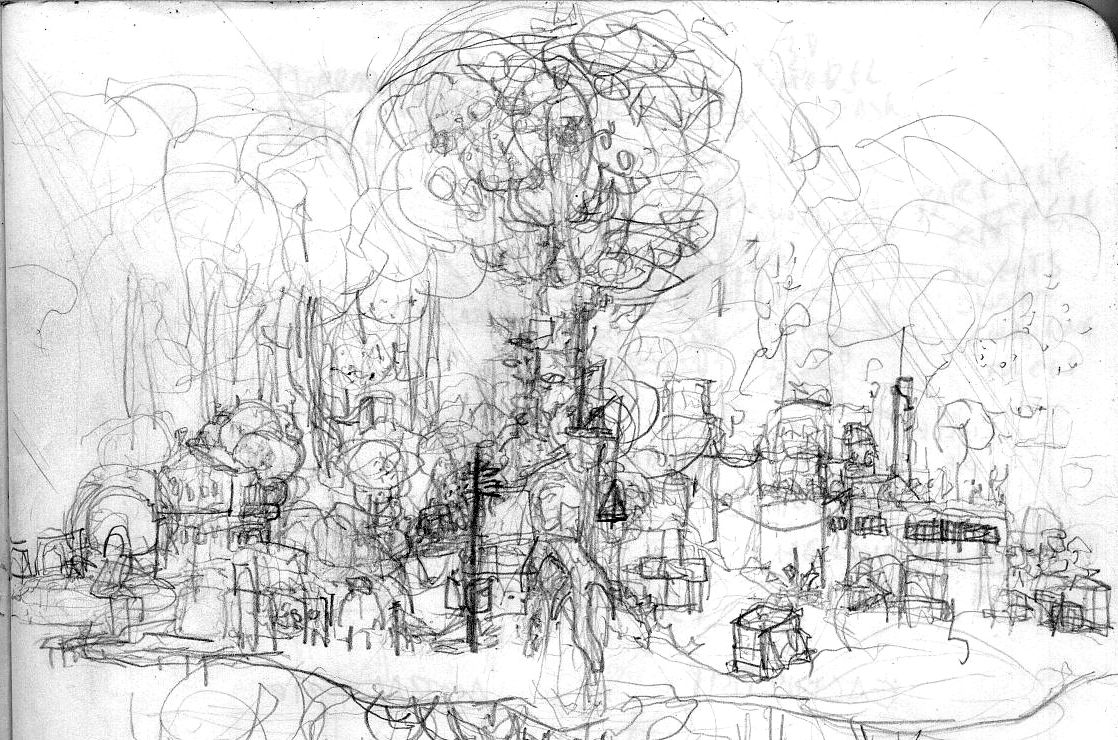
Evolution: Mutazione – “The Town”
Welcome to the Evolution: Mutazione series, a new series of blog posts where Mutazione Creative Director and Die Gute Fabrik founder Nils Deneken deep dives into the early days of the development of the multi award-winning Mutazione. You can read previous posts about ‘The Gardens’ here, and the game’s ‘Platformer Days’ here.
In the third episode of our podcast mini-series, about the early days and music of Mutazione, kindly hosted by the excellent Eggplant Podcast , Alessandro (Composition and Audio Design), Douglas Wilson (Audio Engine Programmer and Design) and I (Creative Direction and originator) talked about the ‘town music’ of Mutazione.
In this accompanying article I want to show the development of the Mutazione town (or village) itself. We will take a look at world-building, the characterization of the place, and the inhabitants of Mutazione.
As mentioned in previous articles, Mutazione went through a long development phase of more than ten years. We changed game genres from platformer to narrative focused game, added musical gardens to its core mechanics in the first X years of the game, and rewrote the game’s story several times.
The whole process of concepting the town of Mutazione was strangely organic, not unlike the game-world itself. Every design decision, whether conscious or unconscious, had a consequence for the gameworld, the story and its characters. Those consequences rippled through the creation process and demanded other decisions be made, which rippled further still, affecting decisions in even the final year of production. But it did start somewhere. with my first concept image of the ensemble cast:

In Mutazione, at the time I drew this concept, these were the main things I knew:
- There was a village in the middle of a swamp, inhabited by mutants and outcasts.
- The setting is post-apocalyptic and you could find ruins and artifacts that were recognisably from “our” world.
- There was an ensemble cast at the heart of it all.
This last thing is the one thing that was constant throughout the development process. There was always a focus on the ensemble cast (the group of characters), and the village of Mutazione. The cast looked a bit different, some characters were added, some taken away, Kai became a teenage girl, and the illustration style changed slightly, but the original village and idea of an ensemble cast remained.
We knew this village would be the centre of the game, it would be inhabited by a varied and colourful cast of characters that had their own stories, relationships and secrets. And that the village would sustain them, and them the village; the community and the place are one.
Let me show you the evolution of the village from the earliest sketches until the final layout:
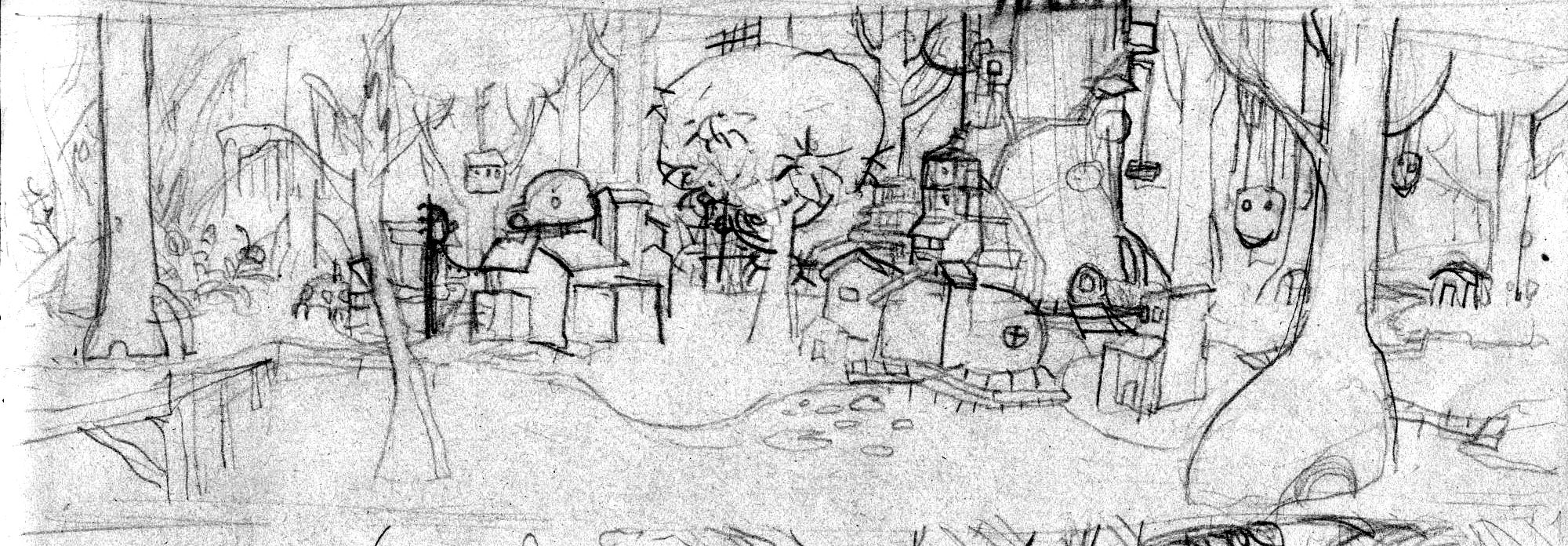
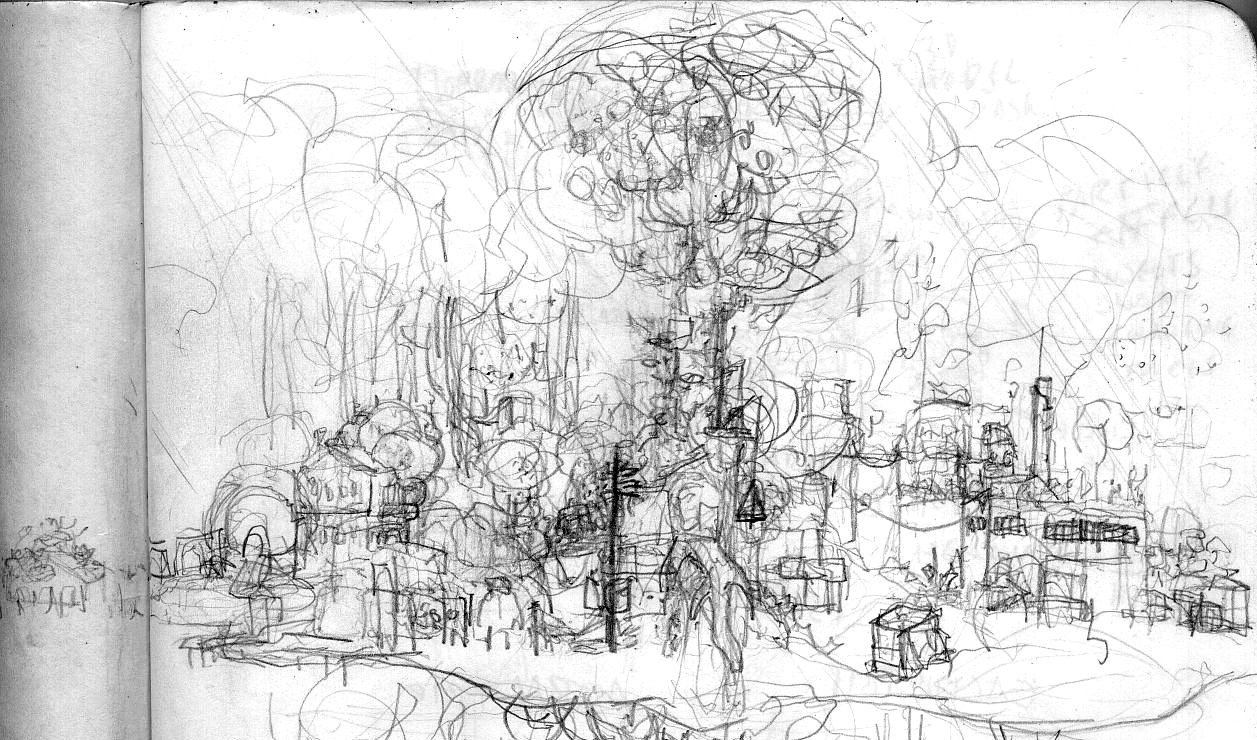

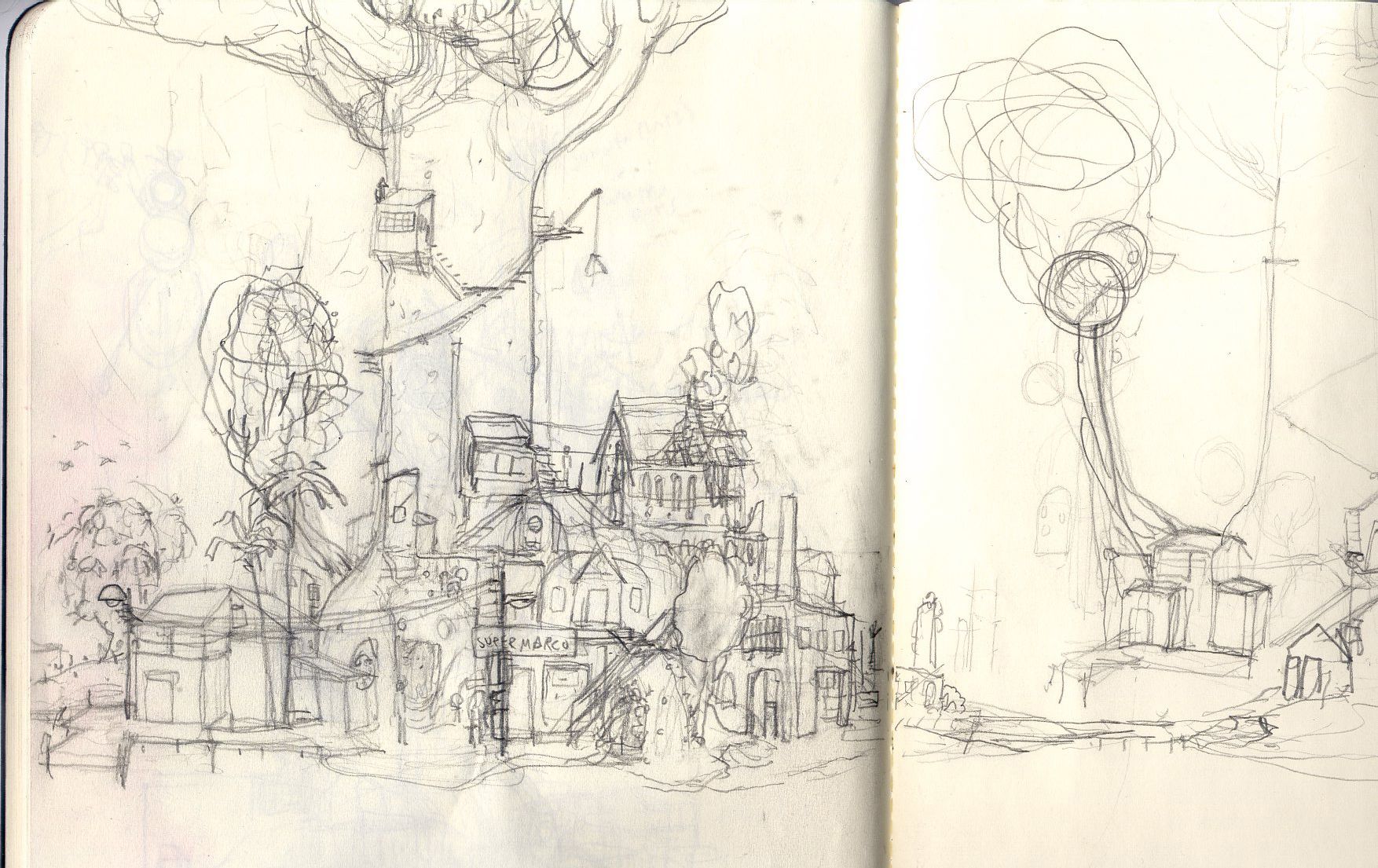
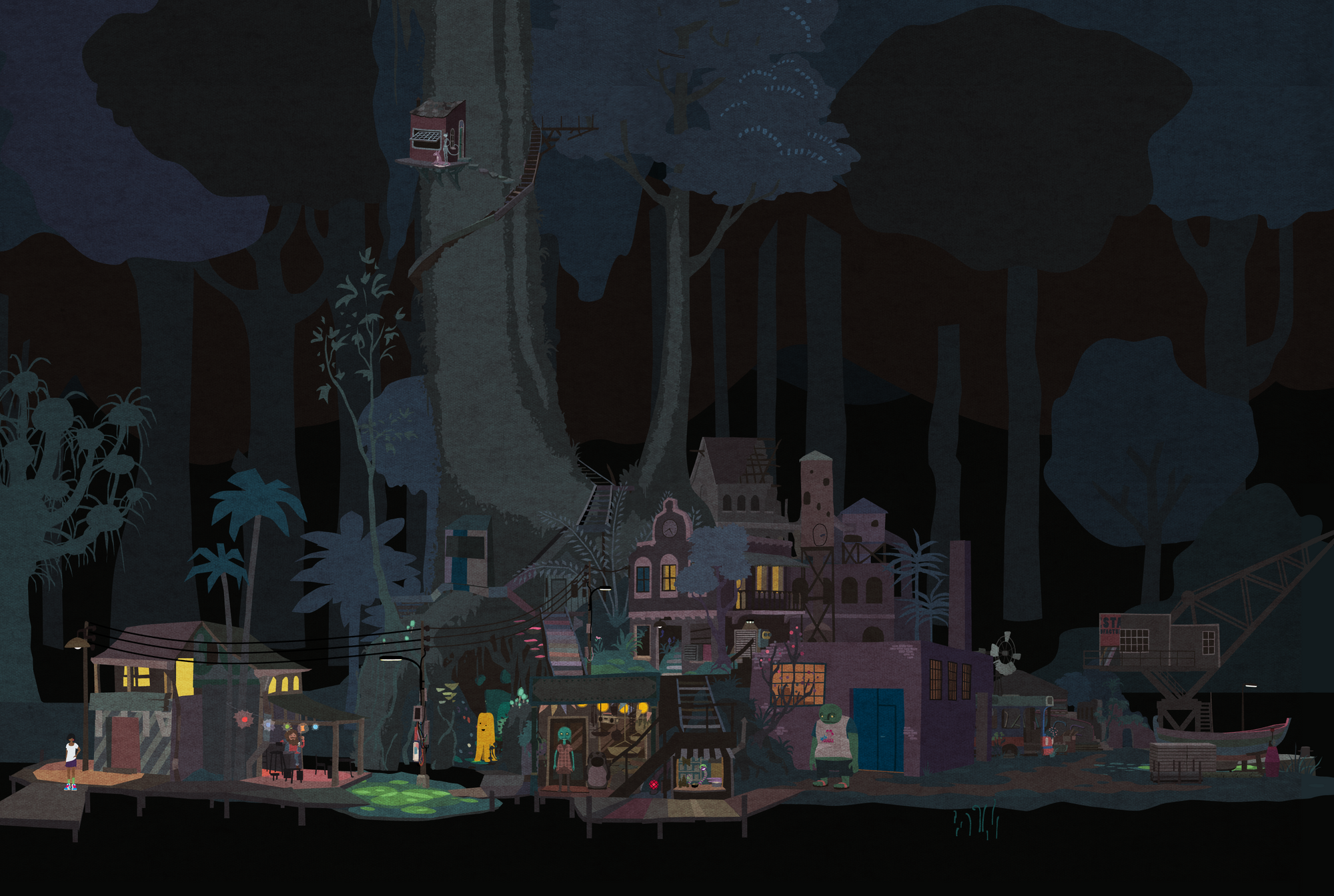
There were a few reasons why I abandoned the village layout portrayed just above here: it was lacking a clear through-line and thus difficult to navigate. It also felt unrealistic to keep the buildings so close to the water level and not protect them from storm surges and floods.It’s important to me that although fantastical or post-apocalyptic, that the sense and reality of a place still remains - grounds the fantasy in an element of lived reality. In my opinion that’s how you make a story like ours feel convincing. I still really like this draft though - I find its compactness particularly visually pleasing, the idea that the community ‘lives on top’ of one another.
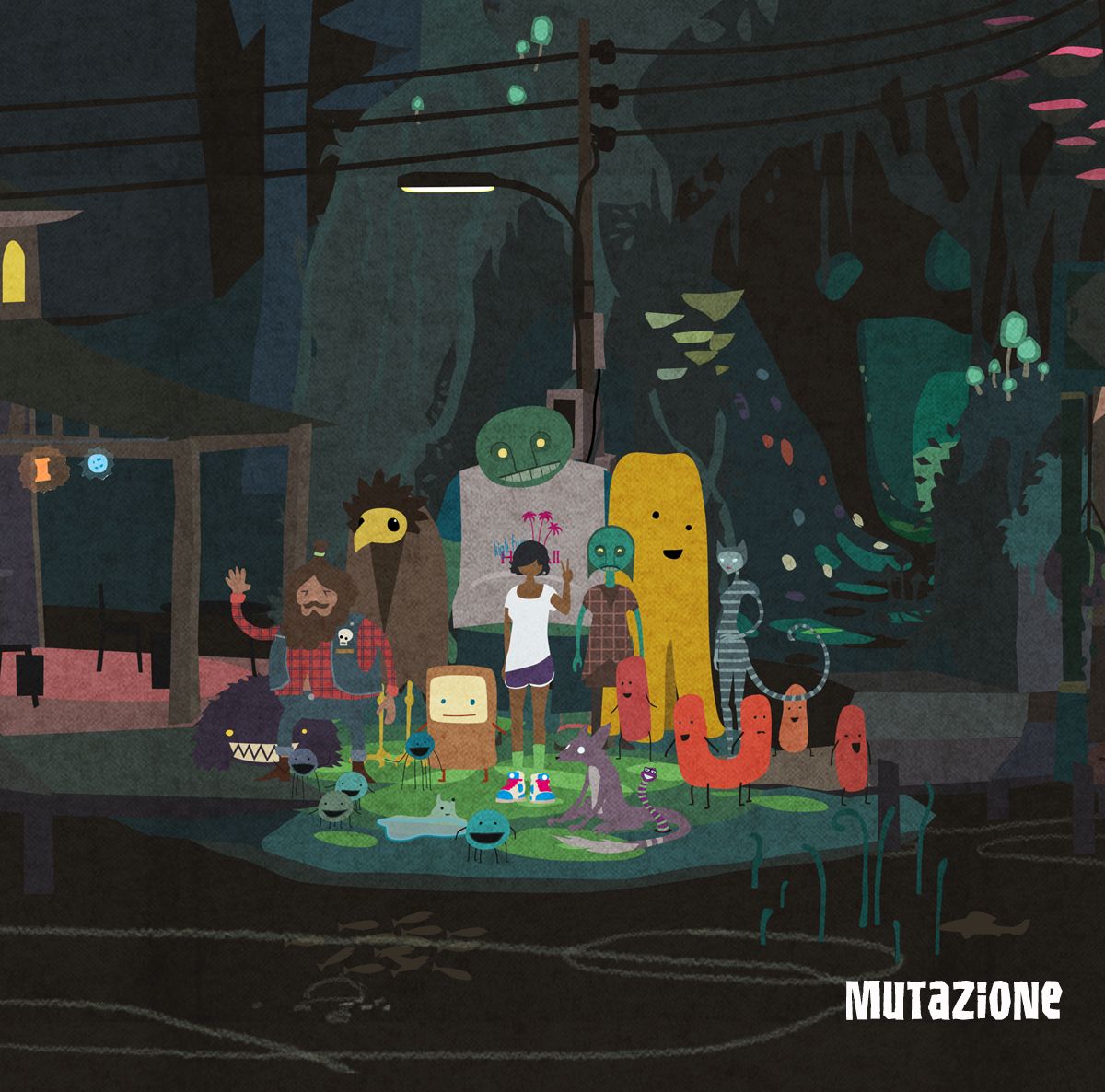
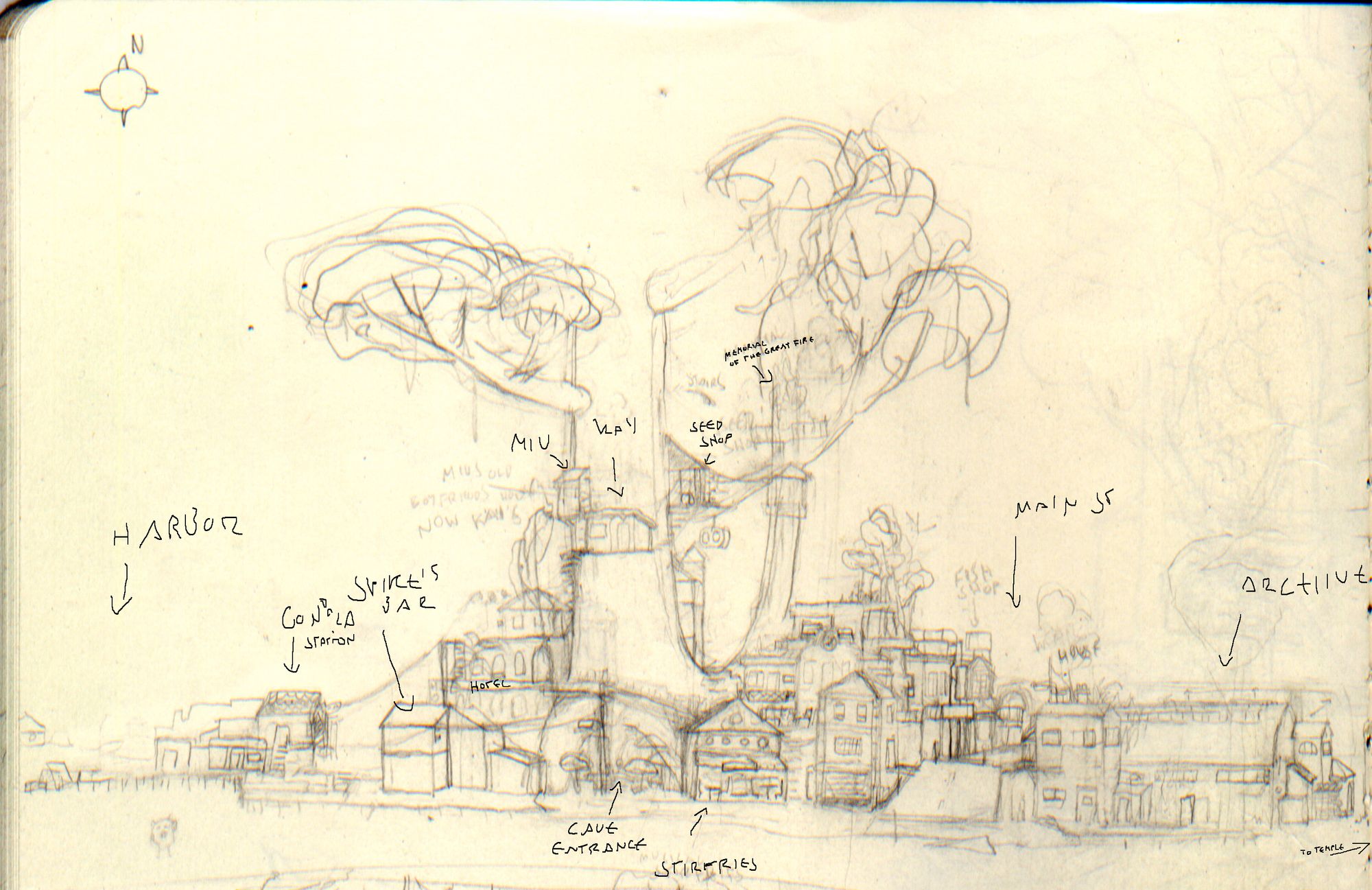
The village kept developing with new places and functions in mind, which created the need for new characters. This was around the fourth year after the initial concepts. At this point we shifted away from the whacky, action-focussed plot, to a more mundane and relatable one.
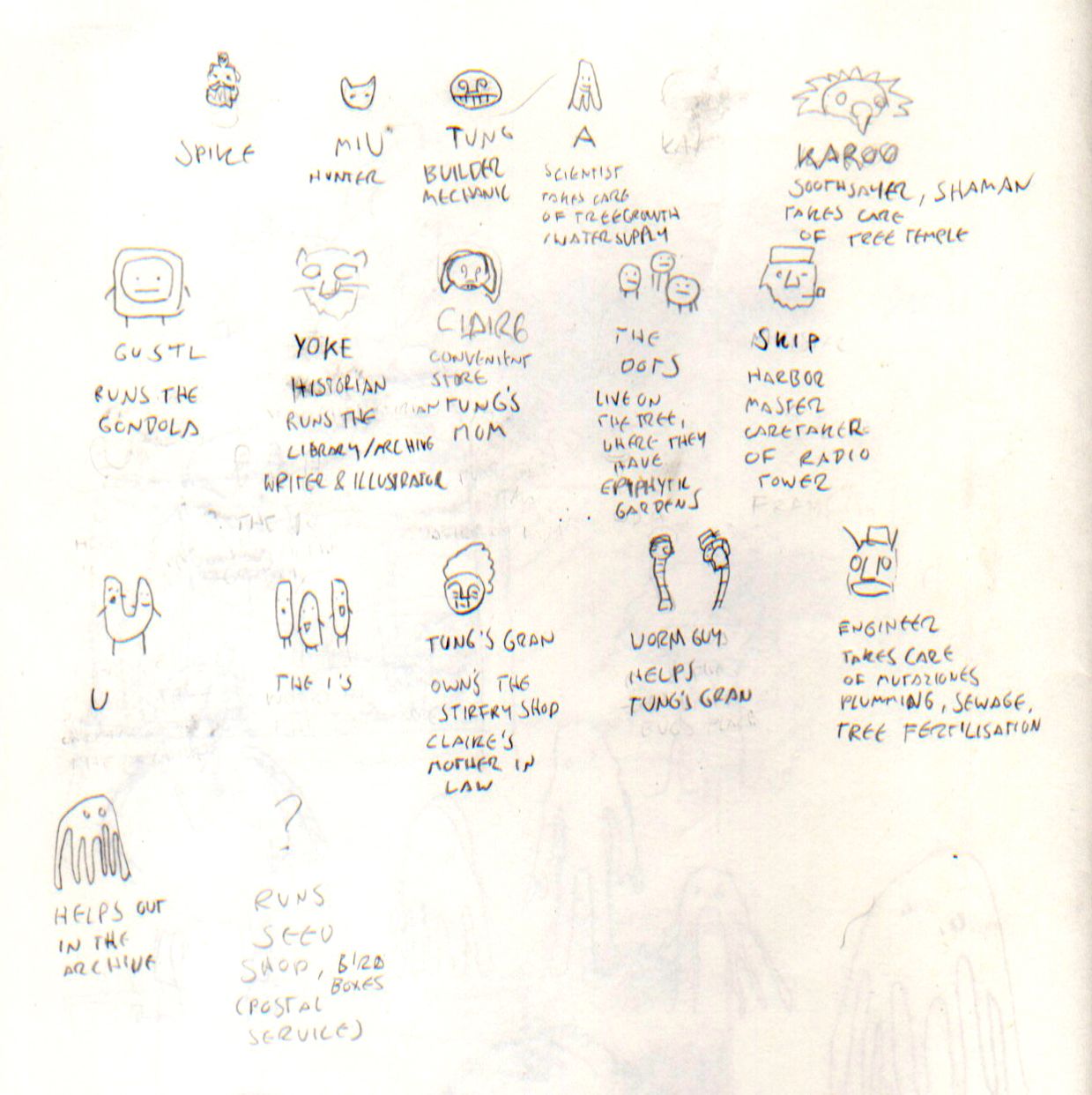
New characters were added, some were removed. I added Tung’s Gran, the Engineer, Skip, who would become Mori, Dennis and Graubert later. Gustl never made it into the final game. He was the caretaker of the gondola (!), which added a cool visual element to the game, but didn’t make sense story-wise.
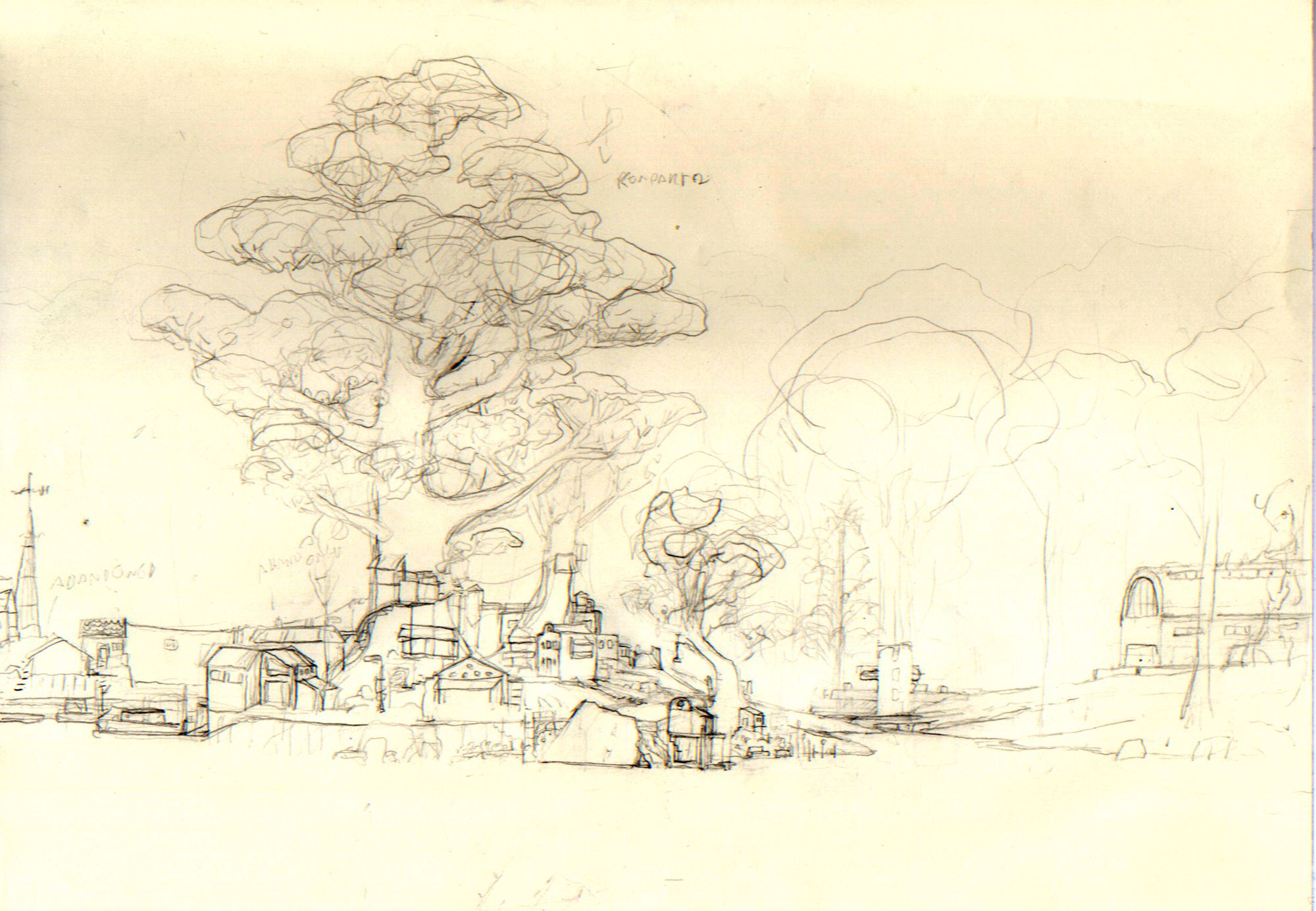
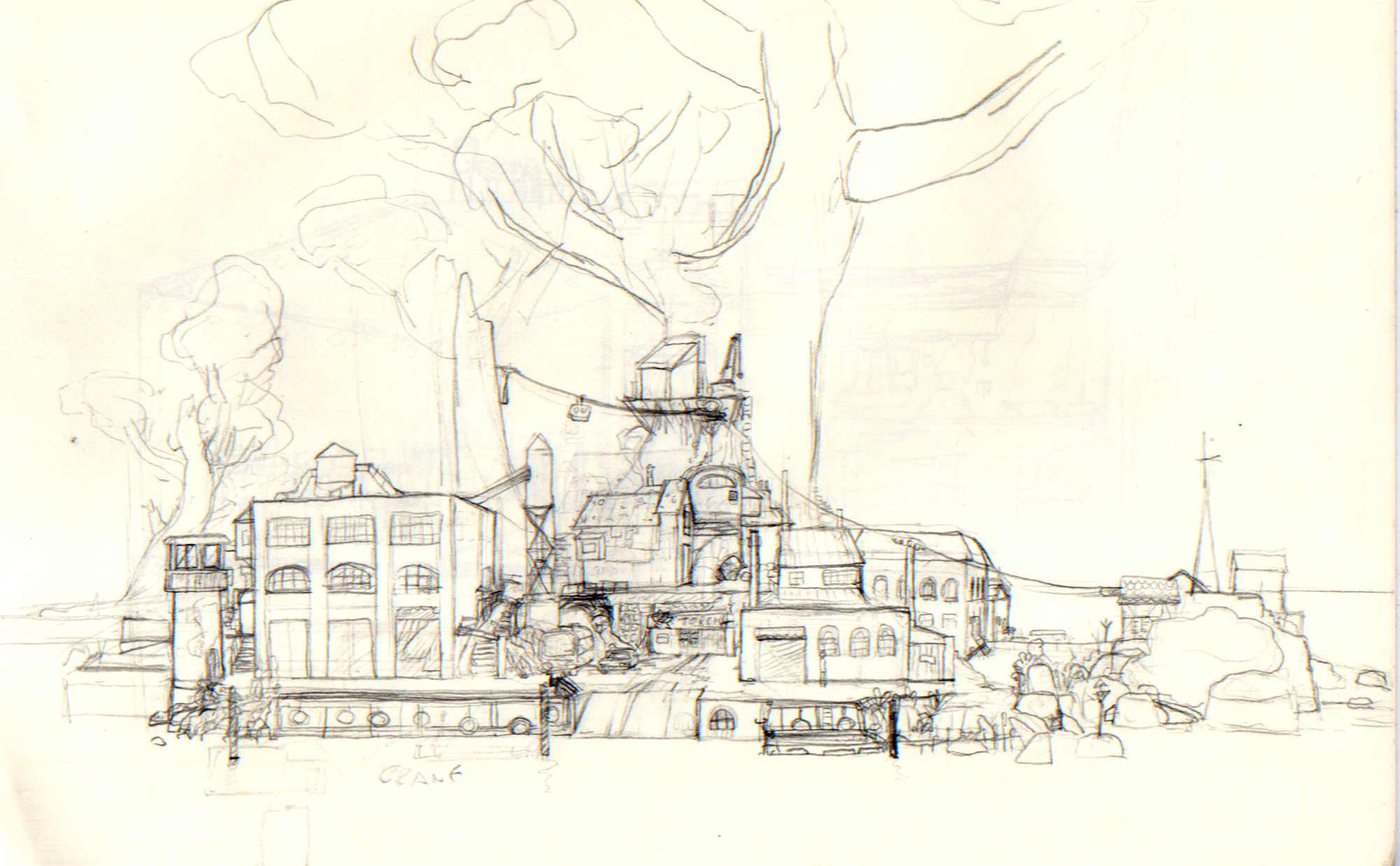
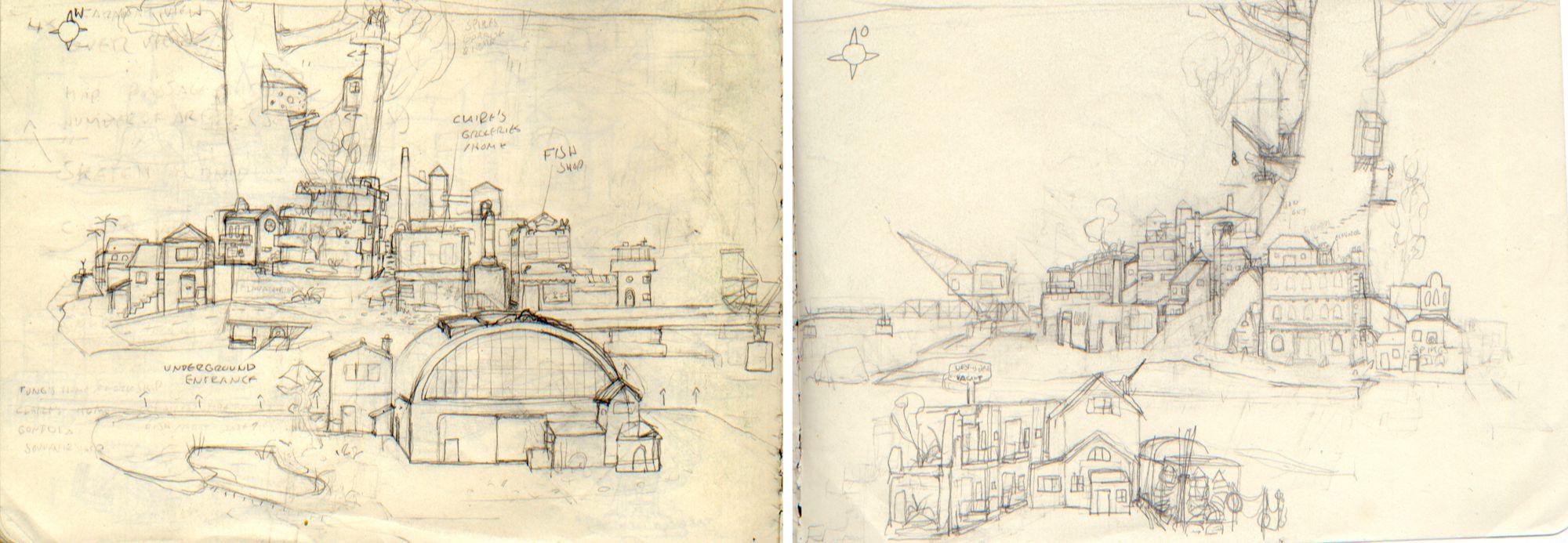
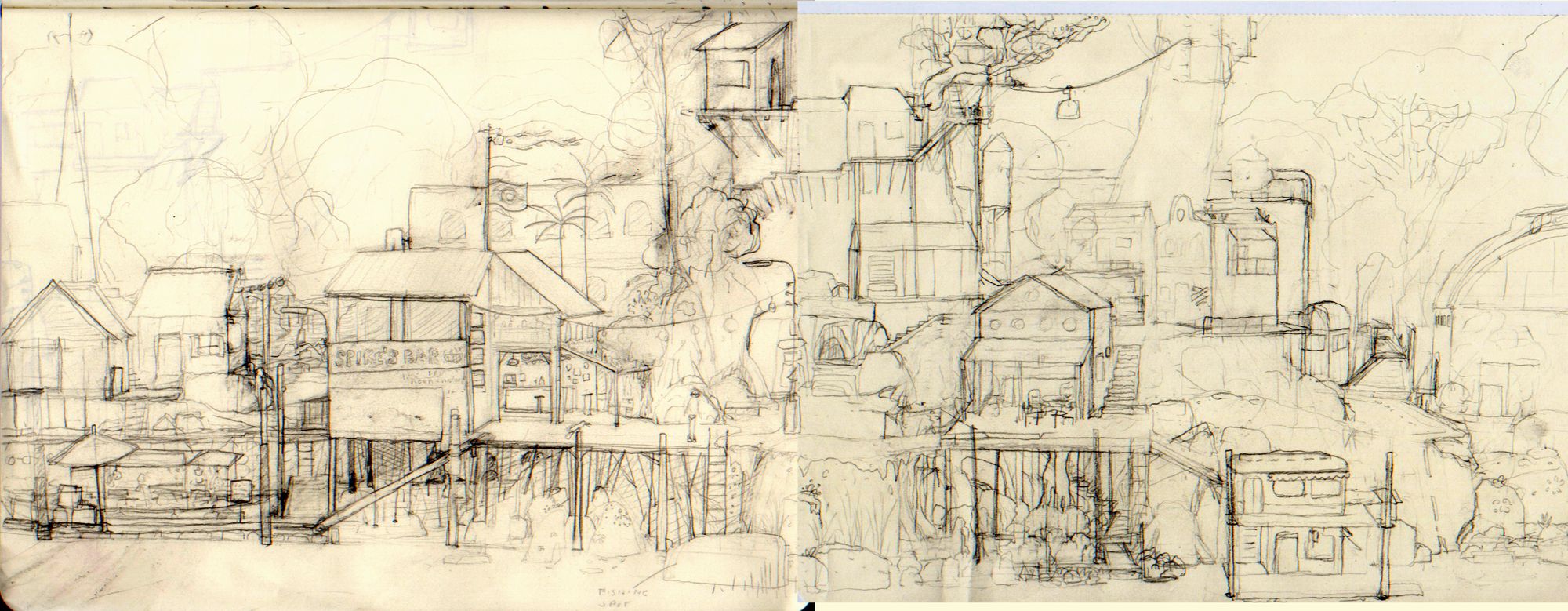
We eventually abandoned the idea of traversing the village from four different angles. Navigating the place with these changes of perspective was confusing and decreased the player’s ability to orient themselves.

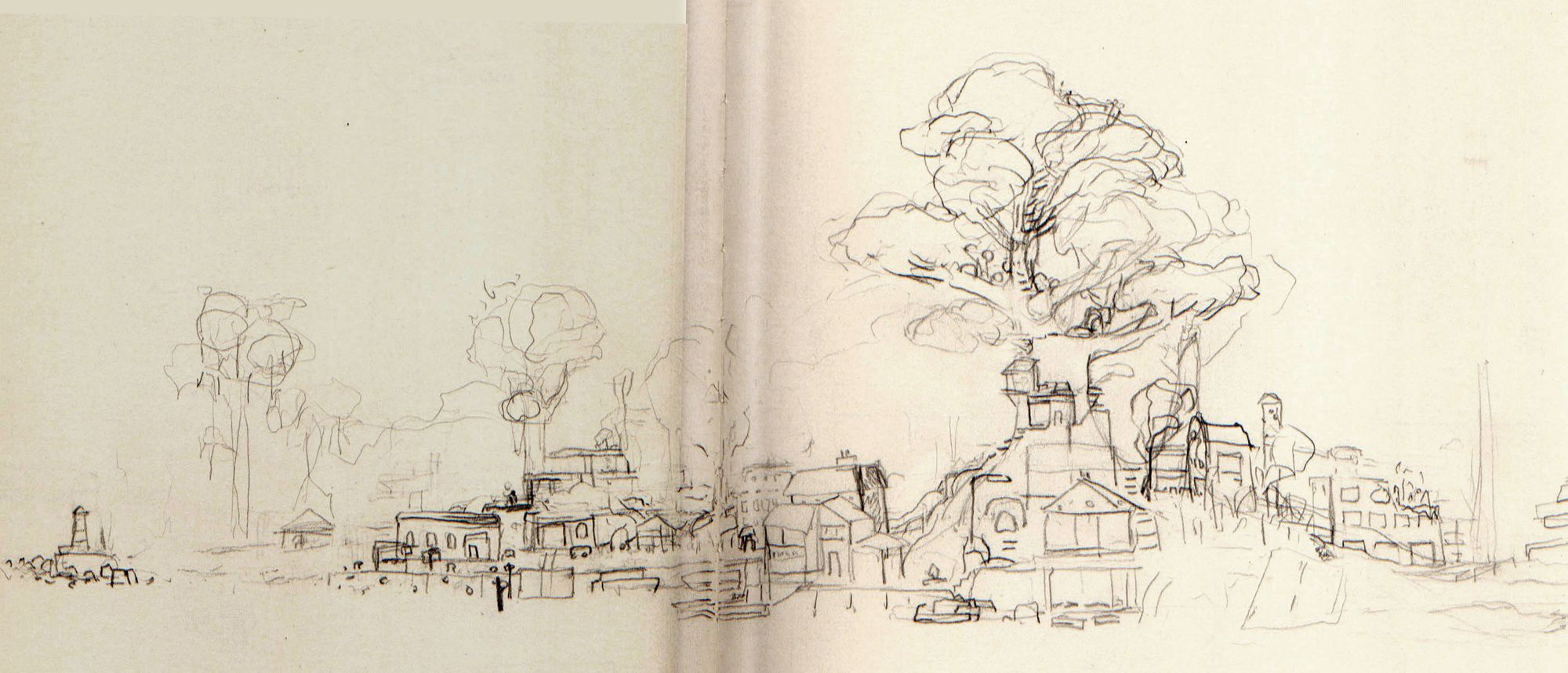

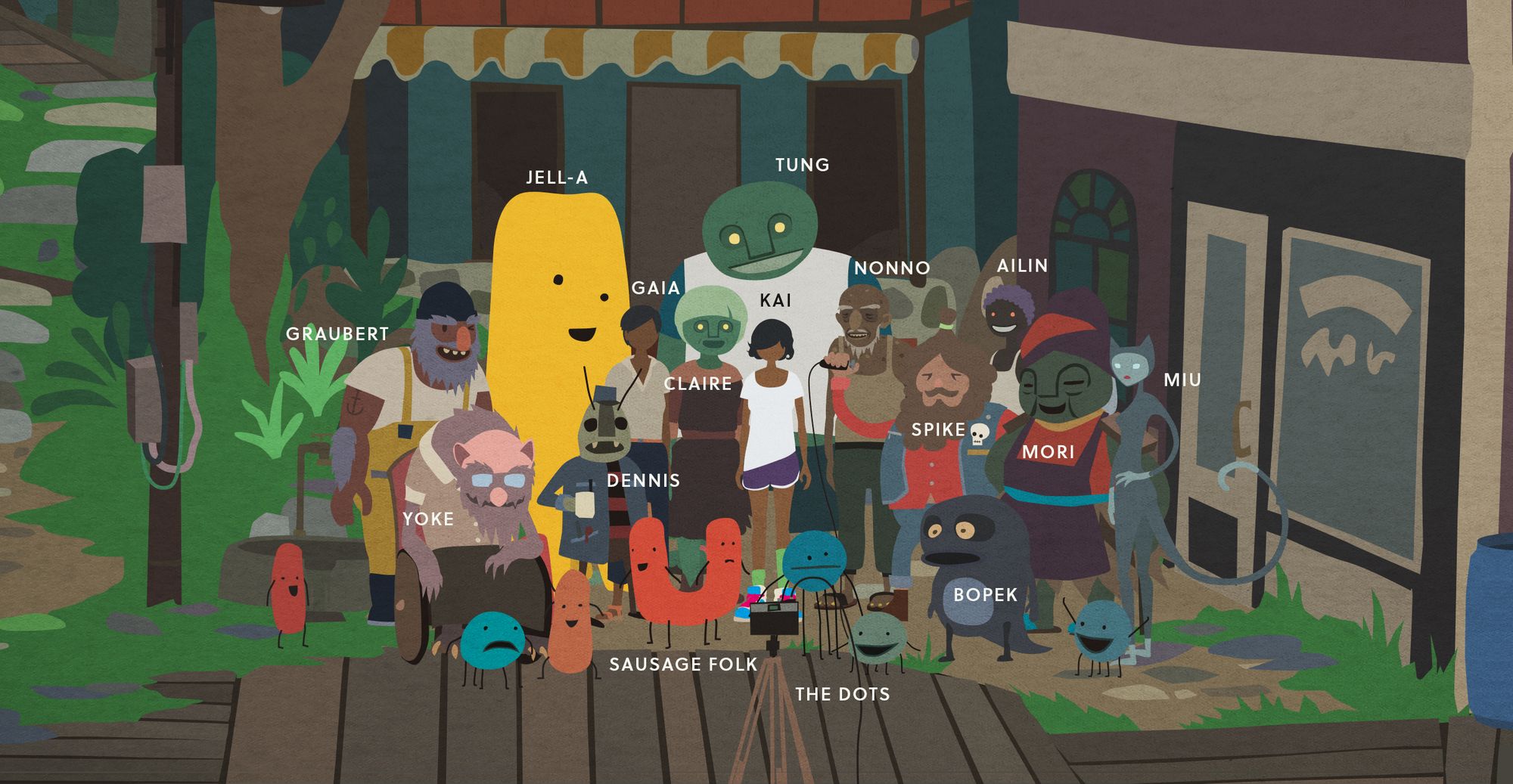
When I look back at the process of drawing the Mutazione village, I can identify four main aspects that needed consideration to get a lived-in and credible game world:
- Historical Grounding,
- Biology,
- Characterisation,
- Gameplay, movement and orientation (which I will not focus on today).
Historical Grounding
The Mutazione village and the world around it is an improbable place, a fantasy world. So I needed to give it a story that made this place credible, gave it a backstory. This helps me when I draw backgrounds, and allows me to create assets for it purposefully, it helps the world to tell a story on its own. And then all I need to do is listen. Here are the key grounding factors that built the backstory of the village:
- Mutazione’s “post-apocalyptic” overgrown setting was created by a meteor impact that happened about a century ago before the action of the game takes place.
- The area of the catastrophe was a holiday town of a faux-70s era which was flooded after the catastrophe, which explains both the swamp and the architecture style of the ruins.
- The meteor crash adds a fantastical element to the history of the place, it gives an explanation for the mutations of flora, fauna and intelligent life in the area, and why this happened over a comparably short timescale.
- It also explains why a giant tree (the Papu Tree) grew from the site of the impact, around which the village of Mutazione is situated.
- The tree has a symbiotic relationship with a mushroom which grows under the roots of the tree, whose mystical properties play an important role in the story of the player character, and the history of the village as a whole.
Biology and Characterisation
Nature, community and how they’re entangled.
Putting a giant tree into the centre of the village had major consequences for the construction of Mutazione and its characters. It’s more than a cool set-piece. It became central to the story of the game, but even when it was not part of the main plot, it was crucial to the visual storytelling of the village. The Papu tree is an important centre piece because:
- It’s a home for the community, many of the characters’ daily lives revolve around the tree.
- It’s a vertical space that encompasses the whole of the community - from its roots to its canopy. Each of those levels are inhabited by different groups of characters that have adapted to the different conditions and biospheres of the tree.
And there’s more to the village than the creatures that are dependent on, adapted to or catering to the Papu Tree. Most of the characters living here are human-like and thus have needs that are similar to ours. They eat, drink, sleep, love, lose, grief, contribute, have a purpose, search for knowledge and meaning, maintain relationships, argue, find room to be excessive once in a while, etc...The village hosts a restaurant, a bar, a harbour, a library, a bathhouse and hair salon, an engineer / plumber / janitor, a hunter, a builder, a shop, a chemist and a spiritual leader.
Having the tree as a centerpiece enabled me to build a web of interdependence and symbiosis, of life which was both complex and legible.
Each of those places is visualised with not only their function in mind, but with the characters inhabiting it or working there, too. They are extensions of the inhabitants’ characteristics, and just as important as the way they’re portrayed through their character designs or the tone of voice of their writing.
Most of the characters have their own space, in which you can primarily find them. It makes it easier for the player to remember them and find them in the game world, and helps build a sense of inhabitance, routine, and rhythm which makes the world and story navigable, as well as grounded in reality. We created a large variety of character poses and animations for all the different environments they would appear in, and make sure they did something meaningful and relatable while idling, like eating, fishing, playing the arcade, or just sitting comfortably and relaxing. You never see a character just standing and waiting for the Player character to dole out quests.
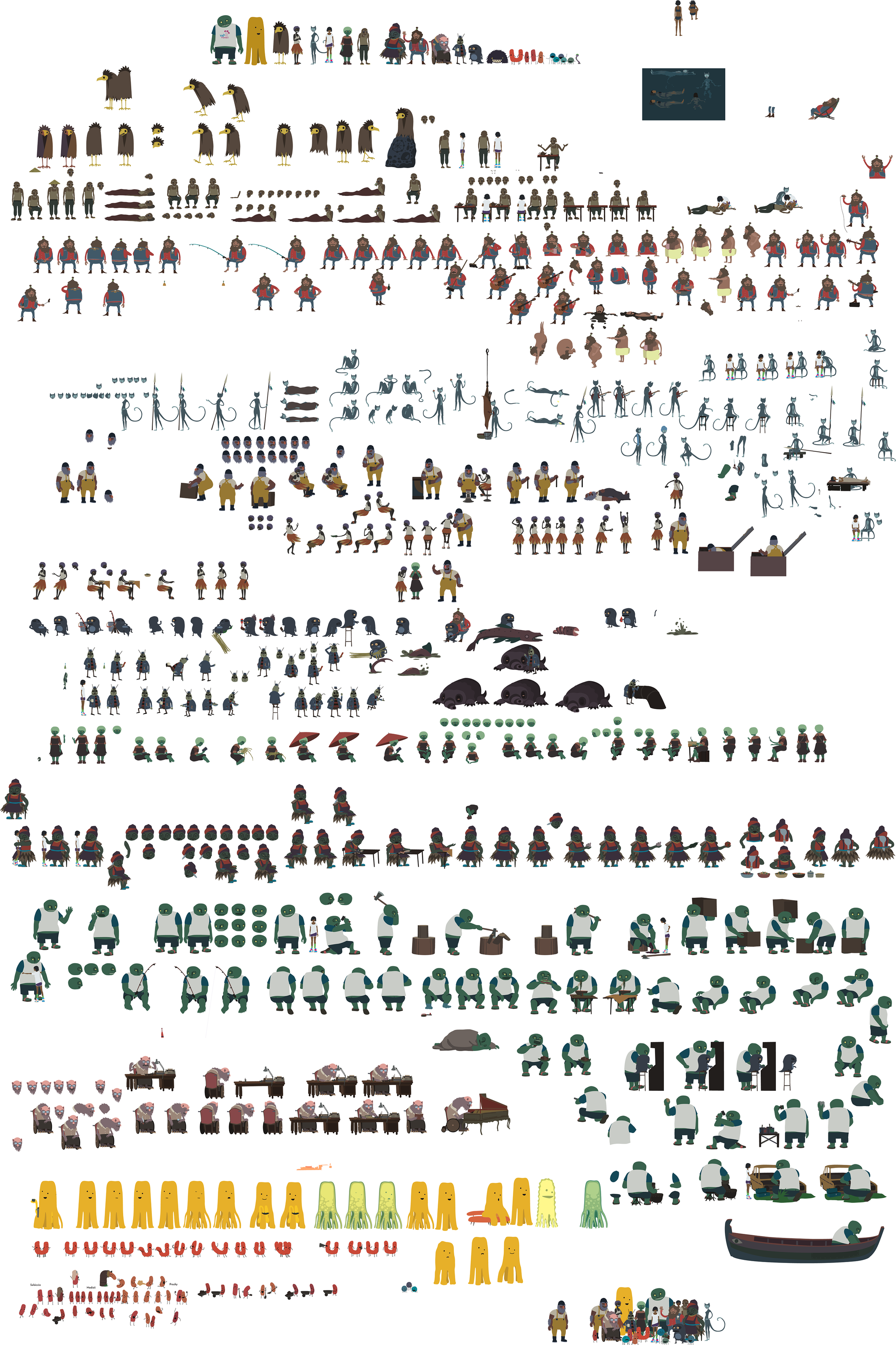
Furthermore and maybe most importantly, each character has a relationship with other characters, as friends, family or in their work life. Mutazione needed places that are shared, accessible and which convey the identity of the community. Through meeting (and in contrast to) other characters, the traits of each individual gets reinforced and affirmed, and the place gets more credible and grounded. This also meant that we needed to decentralise the Player Character. So we gave the Non-Player Characters space to tell their story from, and which Hannah Nicklin (Writer and Narrative Designer) also built into her narrative design and writing choices - the idea that Kai wasn’t always the most important person in every room...
There's more to be said about the biology of Mutazione besides the gardens and how it plays an important role in the world building of the game, but I will save that for another time, when I do a deep dive into areas outside the village.
Thanks for reading this guide through the evolution of the Mutazione village. Do take the time to listen to the podcast episode this accompanies, and in the meantime, check out the excellent other posts on the Gute Fabrik homepage.
